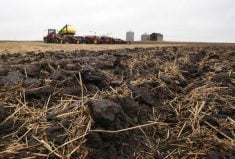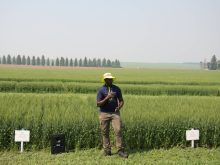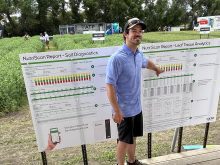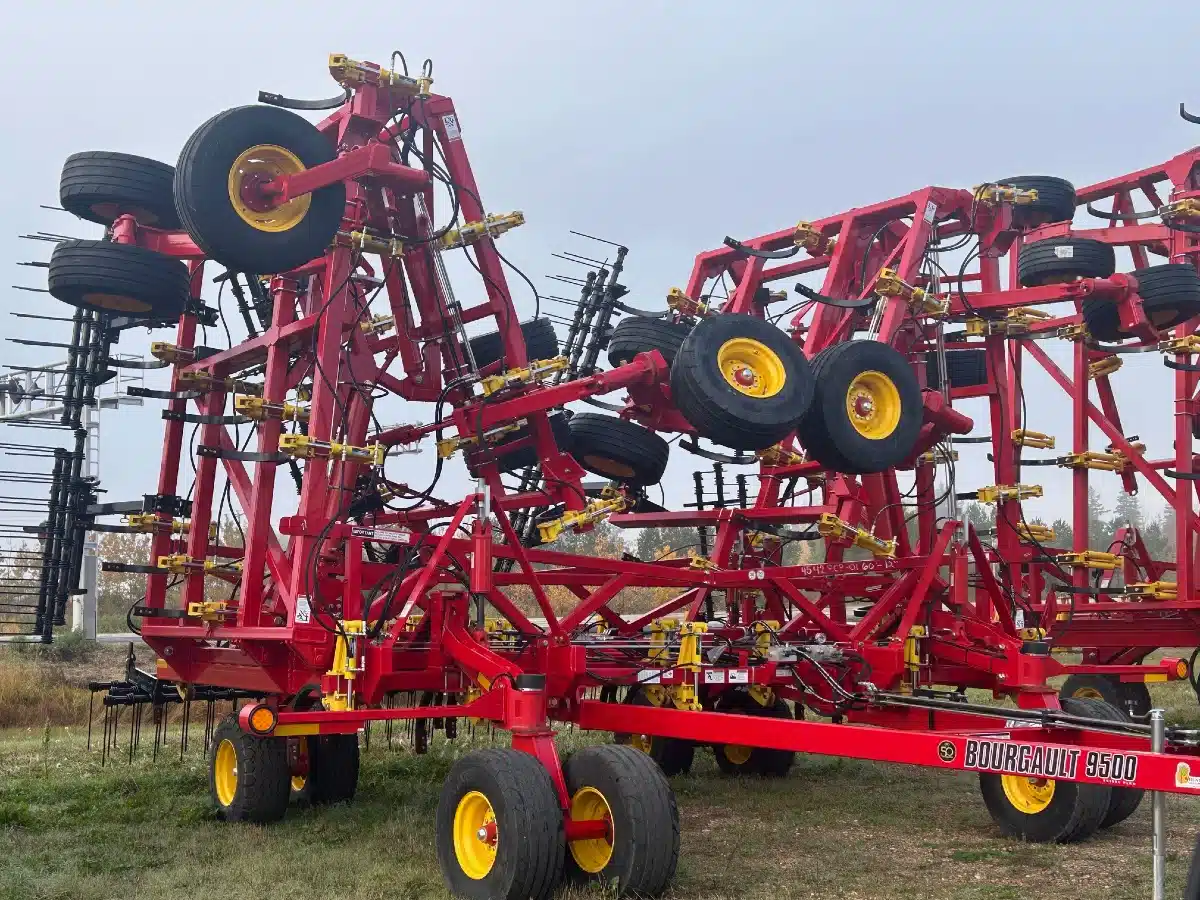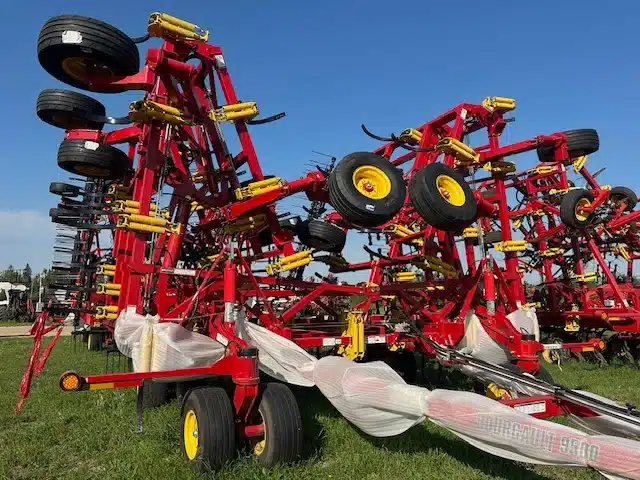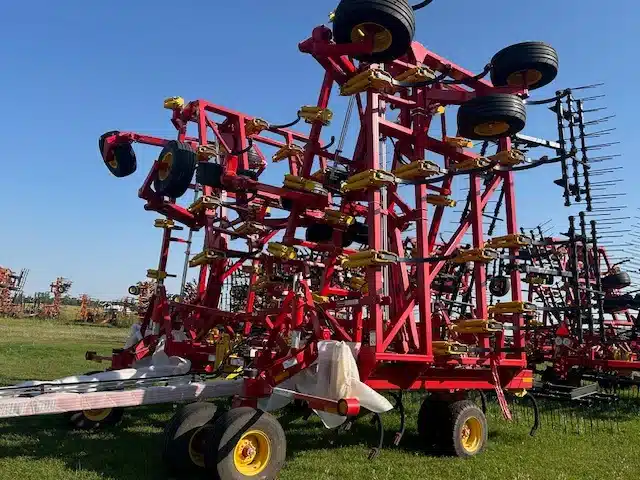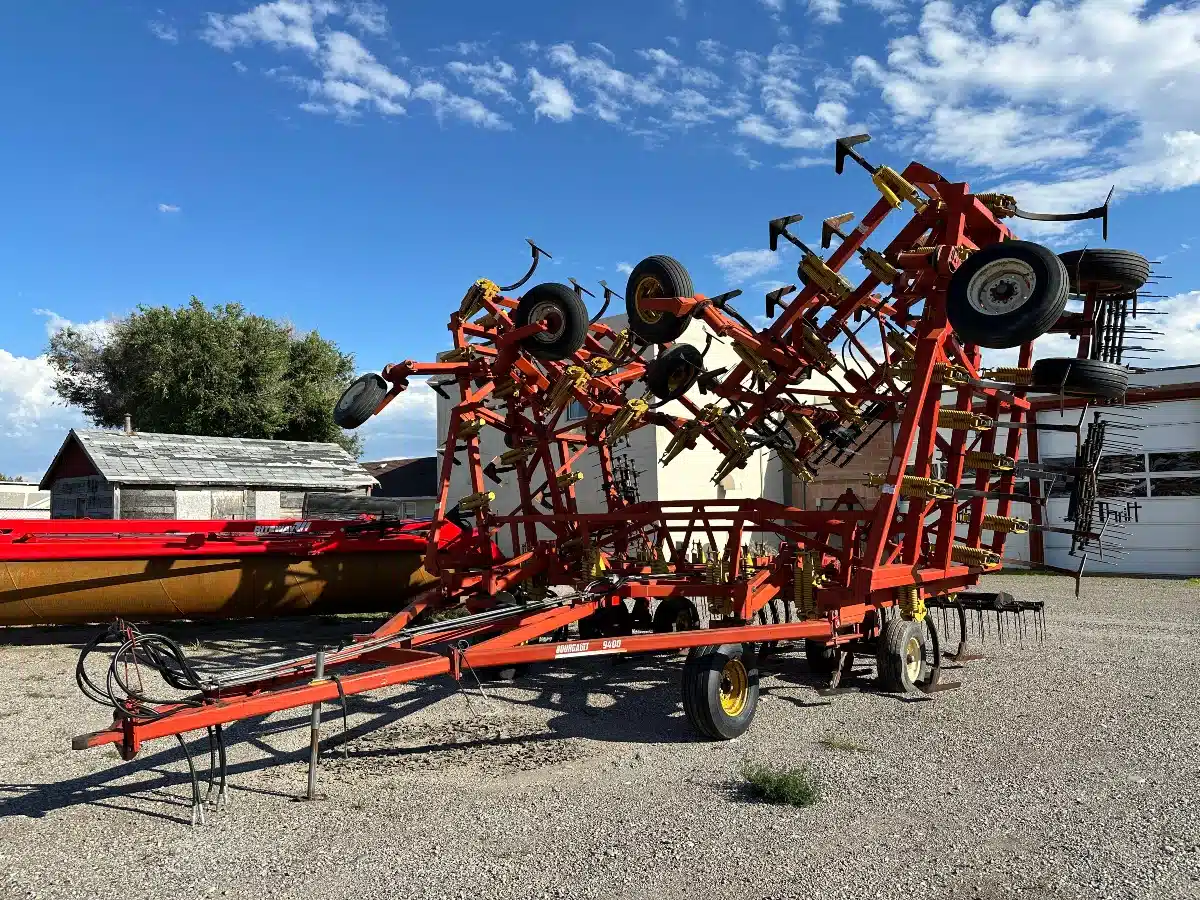A new approach to getting more out of phosphorus fertilizer application is being tested in St. Brieux, Sask.
Curtis de Gooijer and the Bourgault Industries Agronomy Team are field testing deep banded phosphorus at their trial site in St. Brieux, attempting to maximize yield by adding nutrients to typically untouched dirt.
They are placing phosphorus about five inches deep to see if it has lasting impacts on crop yield.
Read Also

Bunge’s crop mix is changing
Bunge has predominantly been a soybean processing firm, but that’s about to change after the merger with Viterra with softseed processing and grain merchandising gaining ground.
“The biggest thing with phosphorus in our soils is that it’s typically found in the top inch, two inches in essentially everybody’s soil in Western Canada because that’s where we’ve been replacing it,” said de Gooijer, Bourgault’s agronomy manager.

“As those top couple inches dry out, if there’s no soil moisture there, there’s no root activity, no uptake. So, the theory is to get that phosphorus down deeper in the soil profile, where that moisture should last longer throughout the season and give the plant better access to it.”
De Gooijer and Bourgault are using a 40-ft SPS360 cultivator to get deep into the dirt. They pull fast, at about six m.p.h., and apply an above average rate.
For their trials, a control strip was done where they seeded using common Saskatchewan practice. They also did a strip where they worked the soil five inches deep without applying extra phosphorus, trying to work the nutrient in the topsoil underneath.

The two other strips were the deep application with 192 pounds per acre of phosphorus, as well as a broadcasted strip with 192 lb. per acre, but only spread on the topsoil.
In the first year of testing, the canola saw a seven bushel per acre increase compared to the control strip, while the broadcast application increased the yield nearly four bu. per acre.
“The strips we applied the deep phos, there was a big yield difference in canola in 2023,” said de Gooijer.
“Then we seeded crossway to them and put in wheat, but there was really no difference (in yield).”
The deep phos application was only applied in year one, to see if the crop productivity can maintain improvement over the next couple years of testing. Ideally, the deeper placed phosphorus will provide for a few years before being depleted.
There were only 3.5 inches inches of precipitation during the canola growing season, most of which came in May. The topsoil dried and made the phosphorus near the surface less accessible to the plants, but the deep phosphorus stayed accessible.
In 2024, the wheat saw more rain, which may be why the yield results were similar. In 2025, canola is going back in.
“We’re still applying phosphorus every year as we normally would. We’re just seeing if that application will have a lasting effect through the years,” said de Gooijer.

Researchers hope the deep placed phosphorus will remain deeper in the soil and provide for crops the next couple years, but the only real way to know if that’s true is by results because it’s difficult to acquire accurate soil samples.
“The problem when you do a deep band like that, is if you soil test and don’t punch that band, and we have no idea where that band is anymore,” said de Gooijer.
“If I miss it on one of the strips, and I hit it with another one, then it could really skew the results.”
After the canola trials this year, de Gooijer says they may try a pulse crop in 2026 to conclude their research.
Bourgault is conducting another trial in St. Brieux where it is testing yield improvements not only with deep phosphorus but also potash potassium to see if there are any added benefits to pushing potassium deeper in the soil.





